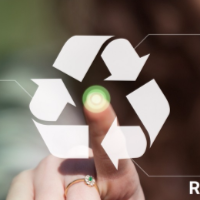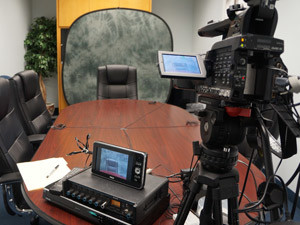Why Legal Videography Is Vital for Accurate Court Recordings
The role of legal videography in court room settings can not be overstated, as it functions as a vital device for maintaining the stability of court documents. By catching both spoken and non-verbal interaction, it improves the quality of witness testimonies and shows the subtleties of court room communications. This detailed documents not only aids in reducing possible misunderstandings but additionally sustains appellate reviews, consequently enhancing the judicial process. Nonetheless, the implications of incorporating legal videography into typical courtroom methods elevate important concerns regarding its more comprehensive influence on the legal system. What might these effects involve?
Relevance of Visual Proof
In the world of lawful procedures, the value of visual proof can not be overstated. Visual evidence acts as an effective device in establishing realities, corroborating testaments, and boosting the total clarity of a case. This kind of evidence, that includes photographs, video clips, and representations, can supply a concrete context that spoken descriptions frequently do not have, consequently using juries and judges a more clear understanding of the circumstances bordering a situation.
Additionally, aesthetic evidence aids in the retention of details. Human cognition is naturally visual, and people are a lot more likely to keep in mind and understand details offered in an aesthetic layout. In the court room, this can be vital, as compelling visual proof can sway viewpoints and strengthen the narrative presented by legal agents.
Furthermore, the use of aesthetic evidence can reduce misconceptions and ambiguities that frequently occur from verbal exchanges. By giving a straight depiction of occasions, visual evidence assists to get rid of subjective interpretations and fosters a more objective exam of the facts. Subsequently, the assimilation of aesthetic evidence into legal process not just strengthens the honesty of the judicial procedure however additionally improves the possibility of achieving a just end result.
Catching Non-Verbal Cues
Utilizing advanced videography methods can substantially enhance the capture of non-verbal cues throughout legal process. Non-verbal communication, consisting of facial expressions, body movement, and eye get in touch with, plays a crucial duty in conveying emotions and intentions that might not be explicitly stated in spoken statement. legal videography. Legal videography uses high-def cameras and strategic angles to make sure that these refined cues are recorded with clarity and accuracy
The ability to examine non-verbal behavior can give beneficial context to statements made during court sessions. For instance, a witness's reluctance or self-confidence can be analyzed via their position or gestures, possibly influencing the court's understanding of trustworthiness. The use of close-up shots can help concentrate on a speaker's expressions, allowing for a much more nuanced understanding of the testament.
Additionally, integrating several cam angles can produce a comprehensive view of interactions, highlighting characteristics in between celebrations included. This complex technique not only improves the precision of the court document but likewise aids in preserving the integrity of the judicial process - legal videography. Eventually, capturing non-verbal cues through legal videography promotes a richer, more complete representation of courtroom process

Enhancing Statement Integrity
The integrity of testament can be dramatically strengthened through the use of high-grade lawful videography. Video recordings work as an objective medium that her comment is here captures not just the spoken words of witnesses yet likewise the subtleties of their distribution, including tone, pacing, and psychological expressiveness. This diverse documentation supplies a more clear understanding of the witness's reliability and intents, which can be crucial in lawful procedures.
Furthermore, lawful videography reduces the potential for misinterpretations that might develop from created records alone. When jurors can observe a witness's temperament and body movement along with their statement, they are better equipped to analyze the authenticity and dependability of the evidence provided. This visual context can reinforce the testimonial narrative, making it extra engaging and reputable.
Additionally, the presence of a video recording can prevent prospective variances in testimony. Witnesses may be extra cautious in their declarations when they recognize they are being tape-recorded, causing more accurate and truthful accounts. Overall, top notch lawful videography enhances the stability of testimony, legal videography ensuring that the court has access to a total and honest depiction of the realities as shared by the witnesses.
Supporting Appeals and Reviews
Legal videography plays a crucial function in supporting appeals and evaluations by offering a detailed visual record of court procedures. This aesthetic paperwork records not only the spoken words of witnesses and lawyers yet additionally the nuances of body language, intonation, and court dynamics. Such elements can be crucial in comprehending the context of statements and debates provided.
In the appellate procedure, where the emphasis is on mistakes of regulation and procedural fairness, a video record can act as a vital device for appellate courts. It allows judges to evaluate the original test context, ensuring that decisions are based on a full understanding of the proceedings. The capacity to visually evaluate the temperament of witnesses or the interactions in between celebrations can reveal insights that composed records may overlook.

In addition, lawful videography can aid in clarifying ambiguities in testimonies or step-by-step judgments, thereby strengthening the basis for a charm. By supplying a reliable, objective account of what transpired in court, lawful videography not only supports the stability of the legal procedure yet likewise encourages all events entailed to make educated decisions concerning their situations.
Enhancing Court Room Procedures
Enhancing court effectiveness, legal videography enhances processes by supplying prompt access to aesthetic records of proceedings. visit this site This modern technology permits judges, attorneys, and courts to review crucial testimony and proof, guaranteeing that all celebrations have a clear understanding of the case. By recording the nuances of verbal and non-verbal communication, videography enhances the record, making it less complicated to comprehend the context and weight of testaments.

Additionally, video recordings can facilitate remote participation in hearings, enabling better adaptability in scheduling and engagement, which is particularly useful in complex instances entailing several stakeholders.
Verdict
In verdict, lawful videography plays a crucial role in ensuring exact court recordings by offering essential visual evidence that records both spoken and non-verbal interaction. This technique enhances the dependability of testaments, supports appellate testimonials, and simplifies court room processes. By promoting a thorough understanding of court room dynamics, legal videography eventually contributes to much more equitable judicial end results, enhancing the integrity of the legal system and assisting in educated decision-making.